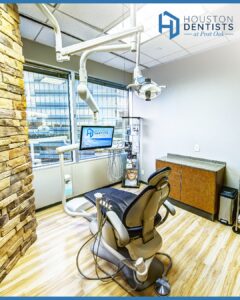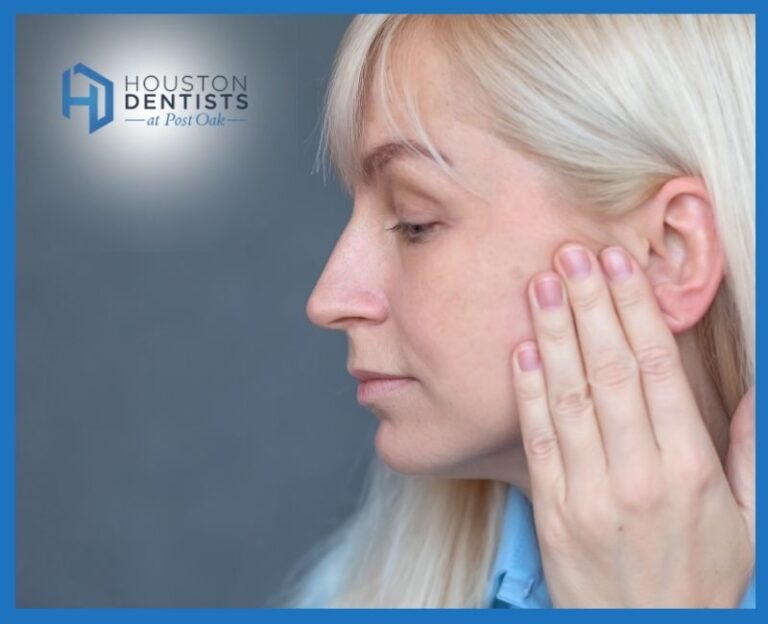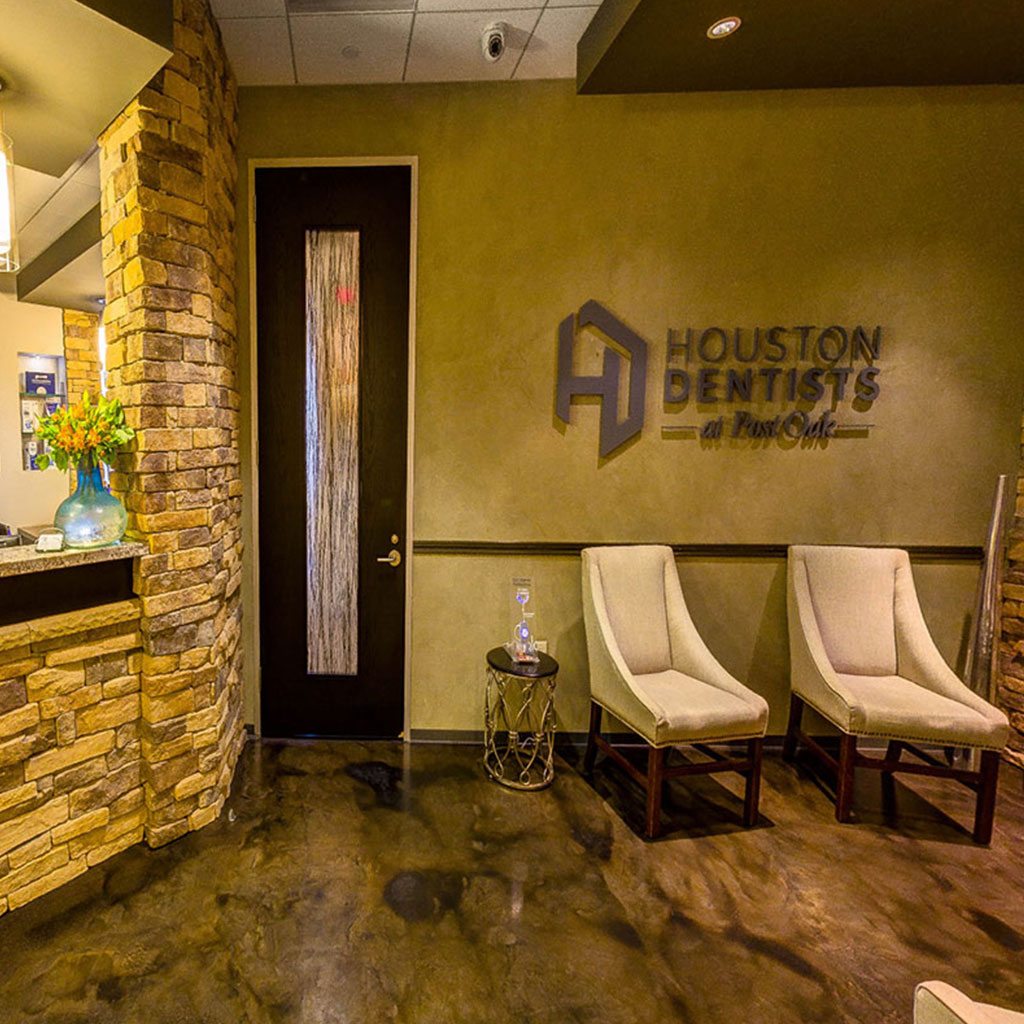Jaw pain is a common issue that affects millions of people across the U.S., showing up as stiffness, throbbing aches, or even sharp pain when speaking or chewing.…

A broken tooth can be an alarming experience, whether it’s a small chip from biting into something hard or a more serious fracture caused by trauma. The immediate discomfort—sharp edges, sensitivity, or even severe pain—is only part of the concern. When the structure of a tooth is compromised, the softer inner pulp becomes exposed, making the tooth highly vulnerable to infection and long-term damage. Prompt attention from a dental professional is essential to protect your oral health.
Knowing what to do in those first moments can make a significant difference. Rinse your mouth gently with warm water, apply a cold compress to reduce swelling, and if possible, save any broken fragments to bring to your dentist. Avoid chewing on the affected side and seek professional treatment right away. At Houston Dentists at Post Oak, patients have the added reassurance of being treated by Nicholas Pigneri, DDS, LVIF, who earned the prestigious Fellow designation from LVI Global in 2022—an honor requiring over 278 hours of advanced dental education and mastery of restorative techniques. In addition, many patients don’t realize that a broken tooth can sometimes be linked to TMJ disorders, as uneven bite forces and jaw dysfunction may contribute to fractures. With advanced training and expertise, Dr. Pigneri provides a comprehensive approach that looks beyond the tooth to the full function of your bite and jaw.
What Happens When a Tooth Breaks
A broken tooth can range from a chip in the hard enamel exterior, or to the complete breakage of an area, leaving the dentin and pulp exposed. Tooth enamel contains no nerves or blood vessels, so enamel loss may cause no pain. When the dentin or pulp is exposed to the air, however, the tooth often hurts. Bacteria can infect exposed pulp over time, causing more pain, discoloration of the remaining enamel, and sensitivity to temperature changes. There may also be pain from the injury that broke the tooth, whether or not the dentin or pulp is exposed.
What You Should Do
If you break a tooth, it’s important to avoid hard foods and cover the sharp edges of the remaining tooth with dental wax or chewing gum to prevent gum damage and soreness of the cheeks and tongue.
What to Do With a Broken Tooth:
- Gather the broken pieces and place them in a clean, dry container for transport to the dentist.
- Rinse the remaining tooth with warm water to remove dirt and debris.
- If an injury broke the tooth, place a cold compress on the area to help prevent swelling.
- Call your dentist to arrange an appointment. If you can see yellow dentin or red, exposed pulp, see a dentist immediately.
Complications of Mouth Injuries:
Sometimes a broken tooth isn’t the only outcome of an injury to the mouth. If you’ve experienced trauma to your mouth, other complications could include the following:
Chipped tooth —If there is no pain and the chip is small, it’s up to you to decide if, when, and how the tooth should be repaired. Depending on the size of the chip, it can be smoothed or cosmetically corrected. Other options include veneers, crowns, and fillings. Ask your dentist to explain these options. If a filling or artificial tooth becomes chipped, it should be replaced.
Cracked or broken teeth —Cracked and broken teeth should be repaired as soon as possible to prevent further damage. Root canal therapy or tooth extraction may be necessary. If a crack affects the enamel and dentin of the tooth, a crown is frequently the best treatment. Keep in mind that cracks are not always visible, even on X-rays. Symptoms may involve pain while chewing and sensitivity to cold and possibly hot foods and liquids, as well as air, which may over time become more pronounced.

Permanently lost teeth, whether they’ve been removed by a dentist or accidentally knocked out, should be replaced. Options for replacing lost teeth include bridges, dentures, and implants.
Broken jaw —If you suspect you or someone else has a broken jaw, do not move it. The jaw should be secured in place with a handkerchief, necktie, or towel tied around the jaw and over the top of the head. Cold compresses should be used to reduce swelling. Go immediately to a hospital emergency room, or call a dental professional.
What Happens After
The correct treatment for a broken tooth depends on the extent of the damage. The dental pulp that is infected with bacteria will die over time. It must be removed and replaced with a plastic filling in a root canal procedure. Dental professionals sometimes wait to see if the nerve of the tooth is dying, in which case a temporary crown may be placed over the broken tooth. If the pulp is not infected, but the tooth is missing a large chip, a crown will restore the tooth’s cosmetic appearance. Usually, the tooth can be repaired when only a small chip is lost.
Preventive measures such as avoiding chewing on ice cubes and hard candies, wearing a mouthguard if you grind your teeth, and sports mouthguards can help prevent broken teeth, but accidents still happen. Following a few simple steps can help dental professionals provide the best possible treatment when a tooth breaks. Eventually, they will restore your smile.

If you’re dealing with a broken tooth—or struggling with TMJ pain—don’t wait. At Houston Dentists at Post Oak, same-day appointments are available so you can get the relief and answers you need right away. Dr. Nicholas Pigneri and our experienced team deliver precise, effective care, whether it’s restoring a fractured tooth or providing a safe, reliable, and durable non-surgical TMJ solution. Call us today at 713-255-1029 to schedule your emergency dentist appointment, and follow us on Instagram @houstondentistsatpostoak for expert tips on protecting your smile and jaw health.
Reference :[https://www.colgate.com/en-us/oral-health/dental-emergencies-and-sports-safety/what-to-do-with-a-broken-tooth]







